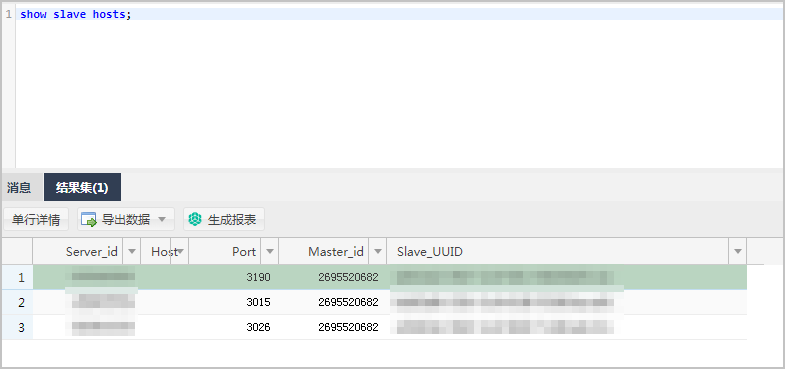Overview
This article describes the results of the "show slave hosts" for an RDS MySQL instance.
Detail
Alibaba Cloud reminds you that:
- Before you perform operations that may cause risks, such as modifying instance configurations or data, we recommend that you check the disaster recovery and fault tolerance capabilities of the instances to ensure data security.
- You can modify the configurations and data of instances including but not limited to Elastic Compute Service (ECS) and Relational Database Service (RDS) instances. Before the modification, we recommend that you create snapshots or enable RDS log backup.
- If you have authorized or submitted security information such as the logon account and password in the Alibaba Cloud Management console, we recommend that you modify such information in a timely manner.
Specific instructions are as follows:
- When the RDS instance is used alone (that is, not using read-only instances), execute the following SQL statement:
show slave hosts;
A similar output is displayed. The information about the slave instance is as follows:
- When read-only apsaradb for RDS instances are created, run the following SQL statement:
show slave hosts;
A similar output is displayed: three slave nodes are displayed. A secondary instance of the primary instance, a read-only instance, and a secondary instance of a read-only instance. The two secondary instances make sure that the primary and read-only RDS instances are highly available.
Application scope
- ApsaraDB RDS for MySQL